Back in the sixties and seventies the BBC had real resources, they made all their own programmes and did ground-breaking technological research, the like of which few commercial operations could compete with. One of the areas in which they made a major contribution was the cutting-edge design of monitors for use in their recording studios and outside broadcast facilities.
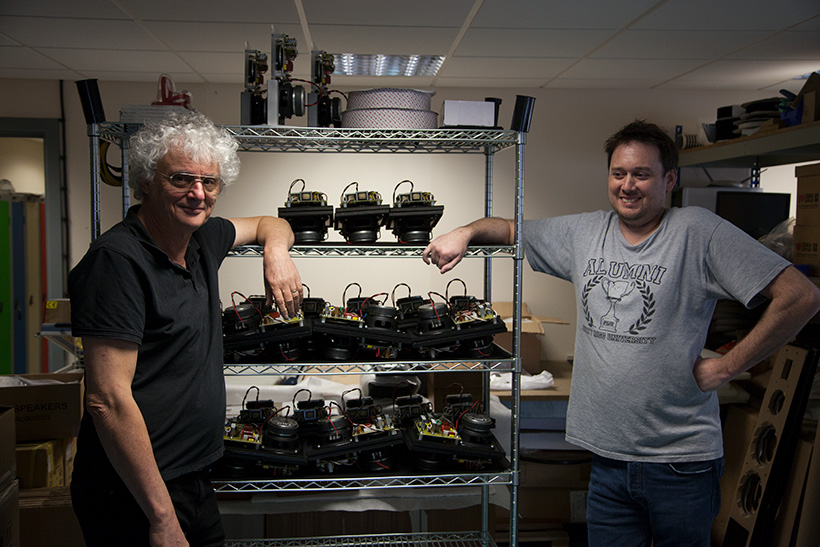
Jerry Bloomfield and Graeme Bridge
Back then, instantly recognisable names such as Harbeth’s Dudley Harwood, Spendor’s Spencer Hughes and D.E.L Shorter were working at the BBC’s R&D Department in Surrey developing the LS series of designs, including, eventually, the legendary LS3/5A, a loudspeaker that has remained in production since those days. Its appeal must, at least in part, be because the manufacture of this and the other BBC designs has always been a licensed affair: you need the nod from Auntie before your speaker is allowed to carry the name.
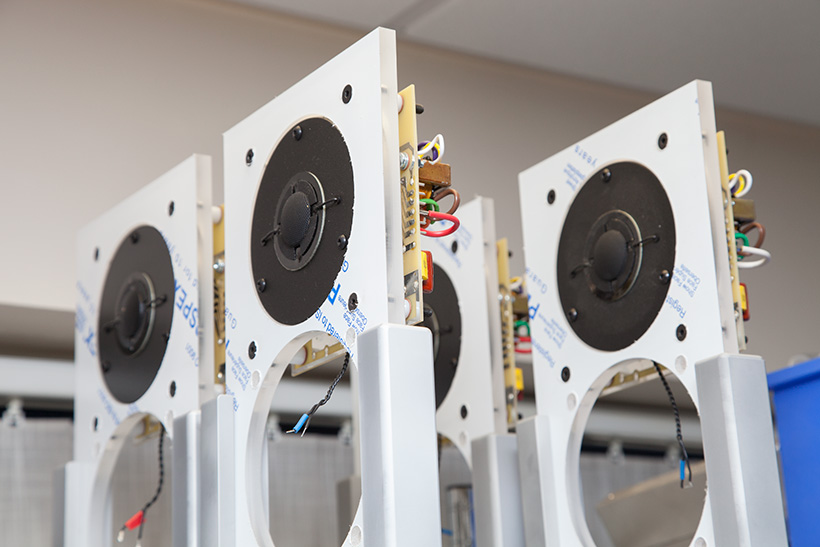
Many companies have built the LS3/5A over the years but few have done so with as much attention to detail as Falcon Acoustics; the only company to have gone to the trouble and expense of re-manufacturing the drive units exactly to the original specification.
In the days when the LS3/5A was built in serious numbers KEF produced the T27 tweeter and B110 mid/bass unit, which were designed by Malcolm Jones. Then, having invented the self-bonding inductor, Malcom began making components part-time. By 1974 he had enough orders to go it alone and Falcon Acoustics took flight. Over the next thirty-five years Falcon became famous among DIY speaker builders for supplying kits of parts and cabinet designs. When Malcolm decided to retire he contacted an old friend called Jerry Bloomfield and offered him the company. An avid LS3/5A enthusiast, Jerry decided not merely to continue the parts business but, jointly with Malcolm, put the B110 driver back into production. By this time (2012) second-hand LS3/As were beginning to command high prices on ebay and demand for original parts was rising, so the move made sense.
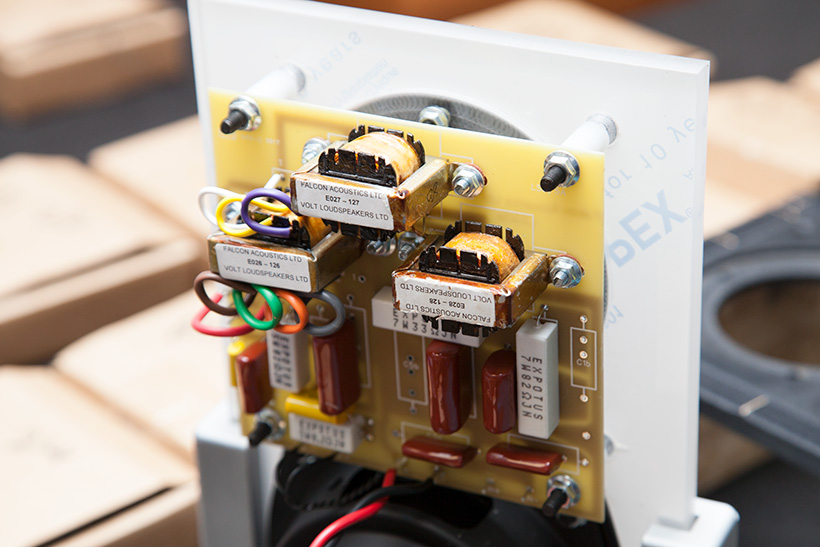
It took Jerry and Malcolm two-and-a-half years to perfect the B110. For one thing they had to order a tonne of Bextrene: a form of rubberised polystyrene material. They also had to build a custom steel chassis, requiring expensive tooling and high unit numbers to make it viable. The hardest part of all, apparently, was finding people with the skills to hand-build the drivers.
Encouraged by the success of the B110 they decided to build an authentic T27 tweeter (I expect you can see where this is going). Again the exact specification was pursued at great expense in time and money but also with enormous love and dedication. After the T27 was perfected, the next logical step was to start building a Falcon LS3/5A.
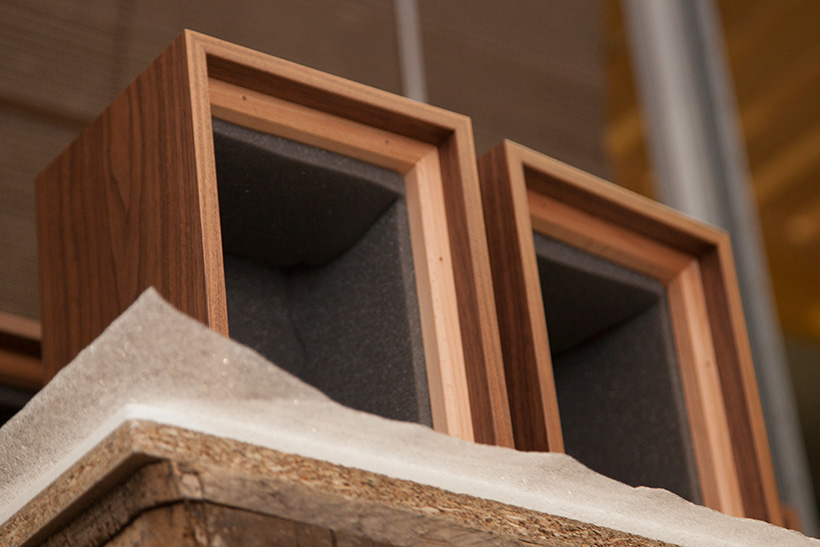
Falcon first applied for a licence from the BBC in 1984 but was turned down because the BBC engineers thought that the samples were of too high a standard to be representative. In fact they were simply meeting the Falcon production standard. This time around the BBC engineers were more approving. Not only had Falcon gone to the trouble of re-creating the original drive units, they had paid attention to the smallest details. For instance, the BBC bods were excited by the way the transformer inductors and similar ‘letter of the licence’ components were arranged on the crossover, and by the use of fibre washers of the correct thickness between the stand-offs and the crossover.
The Falcon Acoustics of today is run by Jerry, aided by former Proac assistant designer Graeme Bridge. Together they assemble the LS3/5A with fanatical attention to detail. I helped to build a pair and was surprised at the lengths to which Falcon goes. It’s a bit like building a car the way that they did in the sixties – only more slowly. While other speaker makers do things as efficiently as possible and use the minimum of materials and parts, adherence to BBC tradition obliges Falcon to do things the old fashioned way. Everything accords with the original spec save the cable terminals. In the 1970s these were just screws for skinny bell wire, morphing into cheap and flimsy plastic types. For its LS3/5A Falcon has custom-designed its own metal terminals as a homage to the shape of the plastic ones but a bit larger, more robust and practical for today’s cables.
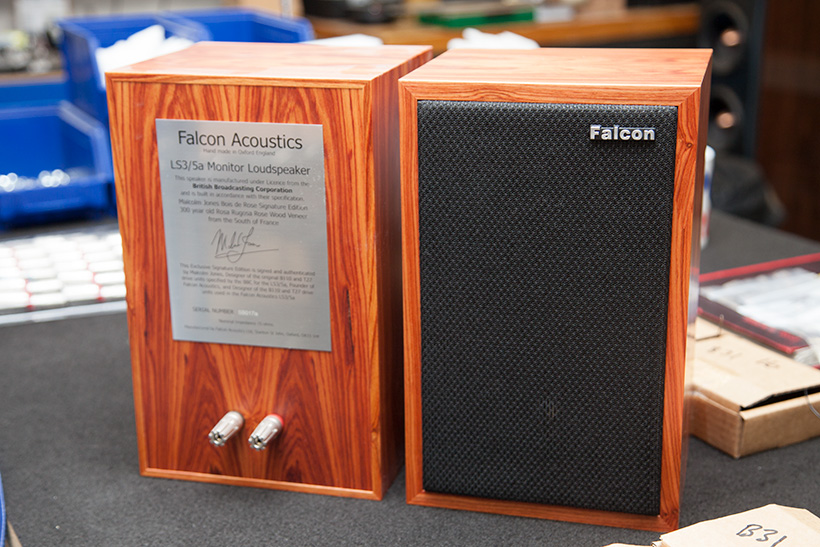
Falcon also uses some particularly nice veneers for its LS3/5As; far more exotic than the cabinets made by Rogers and the like. I saw a pair in rose wood. As distinct from common or garden rosewood, rose wood is from a particularly large and ancient rose. Falcon also showed me some rare amboyna burl veneer, lined up for a small batch of Special Edition cabinets. Falcon builds each pair to order, making up what’s called ‘system boards’ comprising the front baffle with drivers and crossover attached, and fitting these to whichever cabinet the customer has ordered. Its stock includes cabinets in Burr Walnut among other veneers.
It’s no surprise that Jerry has become something of an expert on LS3/5As. At the last Rocky Mountain Audio show he gave a seminar on the way that this classic speaker was developed. He has a collection of examples from across the years and showed me some cabinets that the BBC used from 1968. These have XLR connectors and serial numbers 3 and 4 so are properly rare.
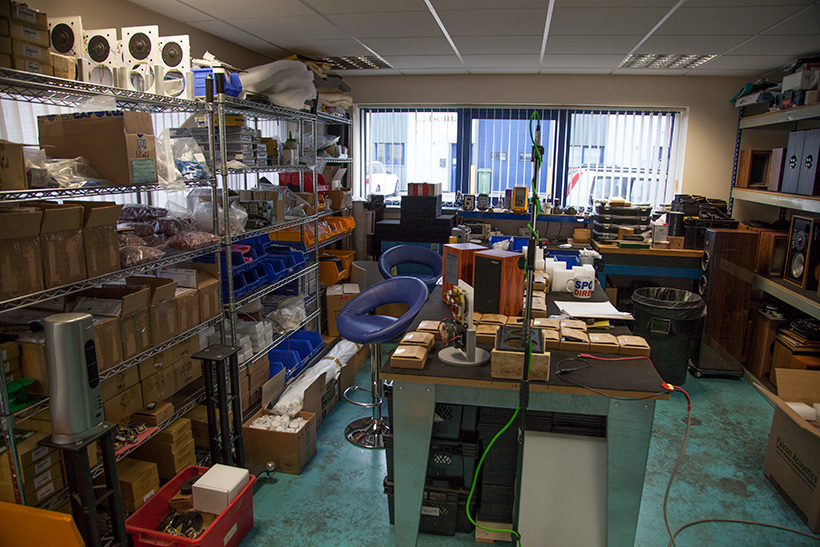
Alongside the LS3/5A, another target for Falcon’s characteristically meticulous approach to production engineering is R.A.M. A well-regarded loudspeaker company back in the 1970s, Falcon has resurrected the marque on a new line of three loudspeakers ranging from a 2-way stand mount to a floor stander using double woofers, a re-engineered dome midrange and tweeter, all custom made by Falcon.
Falcon continues its research into new materials and cone technologies, producing loudspeakers that are in many ways the opposite of the LS3/5A. The first evidence of this is a Reference model unveiled in pre-production form at the Munich High End last May. The design, which is a technologically advanced floor-stander with F1-style graphene-infused cones, blew me away in the dem at that show. Located amongst a cluster of companies that supply the F1 industry, Falcon/RAM is well placed to receive high-spec custom parts and precision metalwork, the supply of which proved invaluable when building the Reference ready for the Munich show. However Falcon has had to go to Italy to source the curved Reference cabinets, which have a shape reminiscent of Sonus Faber design but are very different in construction.
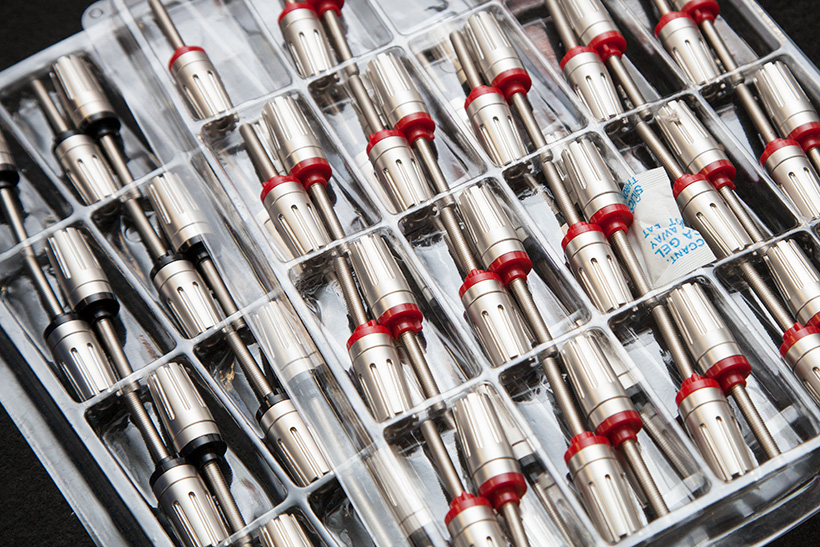
For the future there’s a good chance that Falcon’s dedication to the task of building to the letter of the licence will spill over into other BBC designs, but nothing’s confirmed: we will have to wait and see. But whatever comes down the track I’m pretty sure Falcon will make a success of it. I was impressed with this small company: it goes to the nth degree to do things properly, which means its LS3/5As are a bit more expensive than usual. Falcon’s LS3/5As are the only versions that are authentic to the last washer (speaker terminals excepted), and in a product like this, authenticity is everything. Look at the price of vintage examples and you’ll see that Falcon is not alone in appreciating the intrinsic value of a genuine original.
Jason Kennedy


